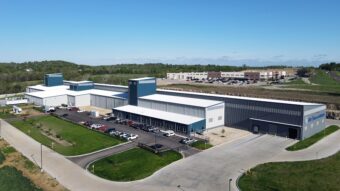One thing is for certain — almost all of our businesses have changed dramatically in the last 18 months. Included in the myriad of challenges that presented themselves under the most unthinkable of circumstances were issues within the supply chain of most companies. In many cases, these issues are still in the process of being retooled.
What were some of the challenges?
- A labor shortage, which is perhaps the most obvious and pervasive. This continues to impact a large number of companies who are still not able to find new employees to fill open positions.
- A shortage of production materials leading to difficulties in the manufacturing of essential supplies. This shortage has caused dramatic volatility within the supply chain, and has been exacerbated by rising demand for many supplies.
- Abrupt changes in customer demands, coupled with production disruptions, required immediate changes to the supply chain to meet the increased demand.
- An increase in costs for the movement of freight, including all modes of transportation, was driven even higher by cancelled shipping deliveries and the “trickle-down” effect of this disruption. Also, logistics companies had to address the health and safety of their workforce, ensuring railroad, port, and warehouse workers and truckers could continue keeping the supply of products and materials flowing uninterrupted.
Many changes were already underway to address these challenges when the pandemic began, and the result has been an acceleration of the required “retooling” in order to address immediate, instead of future, requirements.
As a result of this confluence of events, businesses have had to learn the meaning of the word “pivot” in ways they could never anticipate, and at the forefront of most company’s priorities has been the health and safety of their employees.
Flexibility, adaptability and agility are concepts that are key to the ongoing economic recovery. Some of the modifications that companies have made to address the challenges above include:
- Collaborative efforts with other manufacturers and health care experts to refine the design and manufacturing process in order to achieve high-volume production safely.
- Addition of transportation partners, including rail and water transportation, to manage the risks inherent to future disruptions in transportation of goods.
- Increased use of automation and new technologies to adjust more quickly to changes in production demand, and to manage the ongoing and sometimes unpredictable nature of that demand.
- Changes in inventory level management in an effort to anticipate demand surges, as well as how long the increased demand is likely to last. This includes a shift to keeping more inventory on hand to provide additional flexibility for the customer.
The pandemic has also created an opportunity to re-shore production that original equipment manufacturers (OEMs) have previously outsourced. The global supply chain risks have become a very real challenge, so OEMs are more willing to change or add new suppliers and incur additional costs to prevent unanticipated supply chain disruptions.
The long-term focus on optimizing the supply chain in order to reduce inventories and reduce costs has taken on a new meaning since early 2020. Fortunately, new technologies, such as digital supply networks (DSNs), are improving the supply chain and providing increased transparencies throughout the entire system. These technologies will help companies to minimize the dramatic disruptions within the supply chain that occur due to unplanned events and minimize the consequences of these disruptions in the future.
This article also appears in the July 2021 issue of Chicago Industrial Properties




